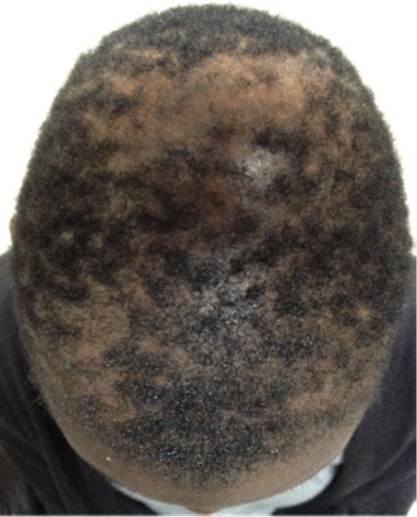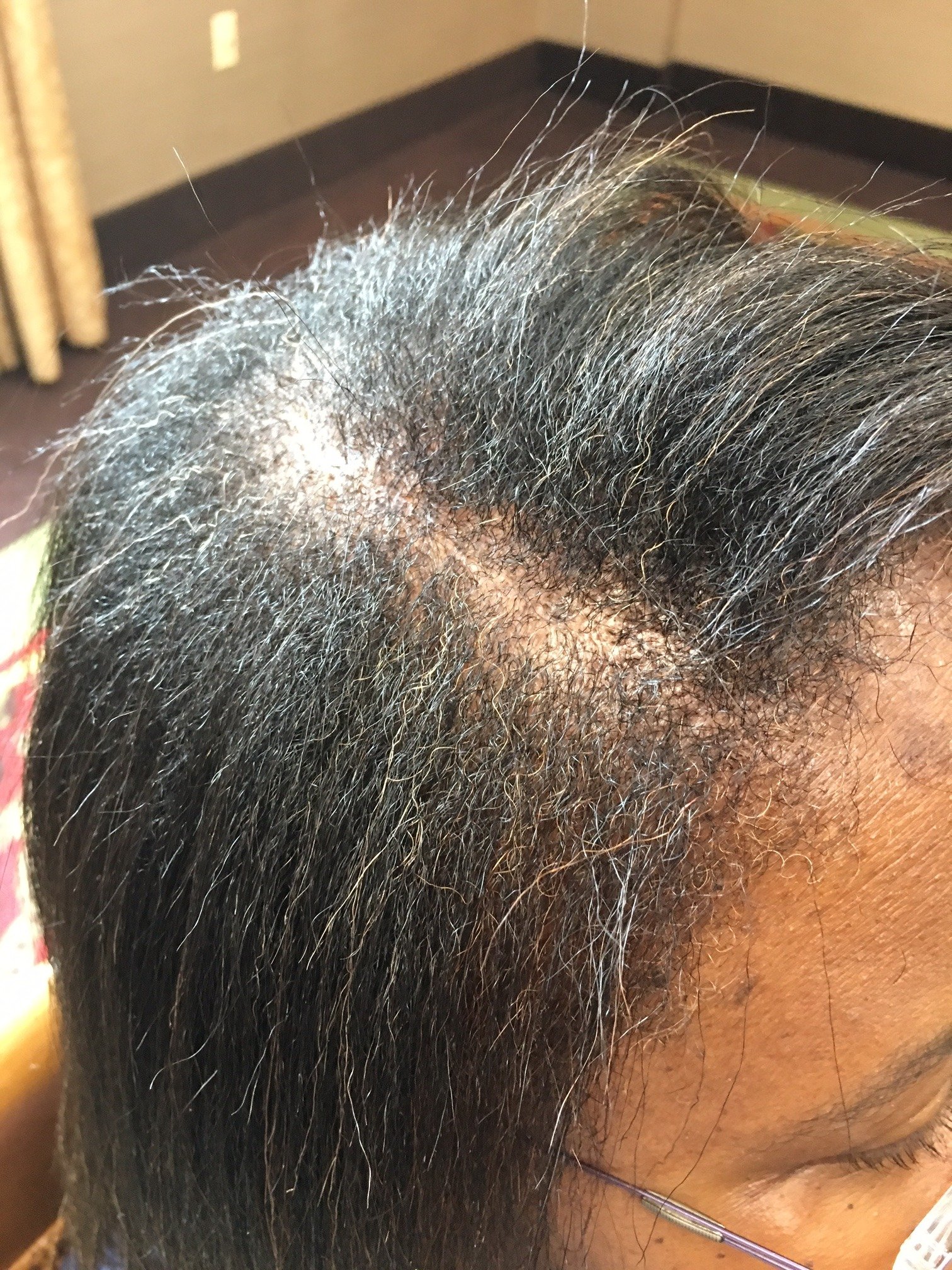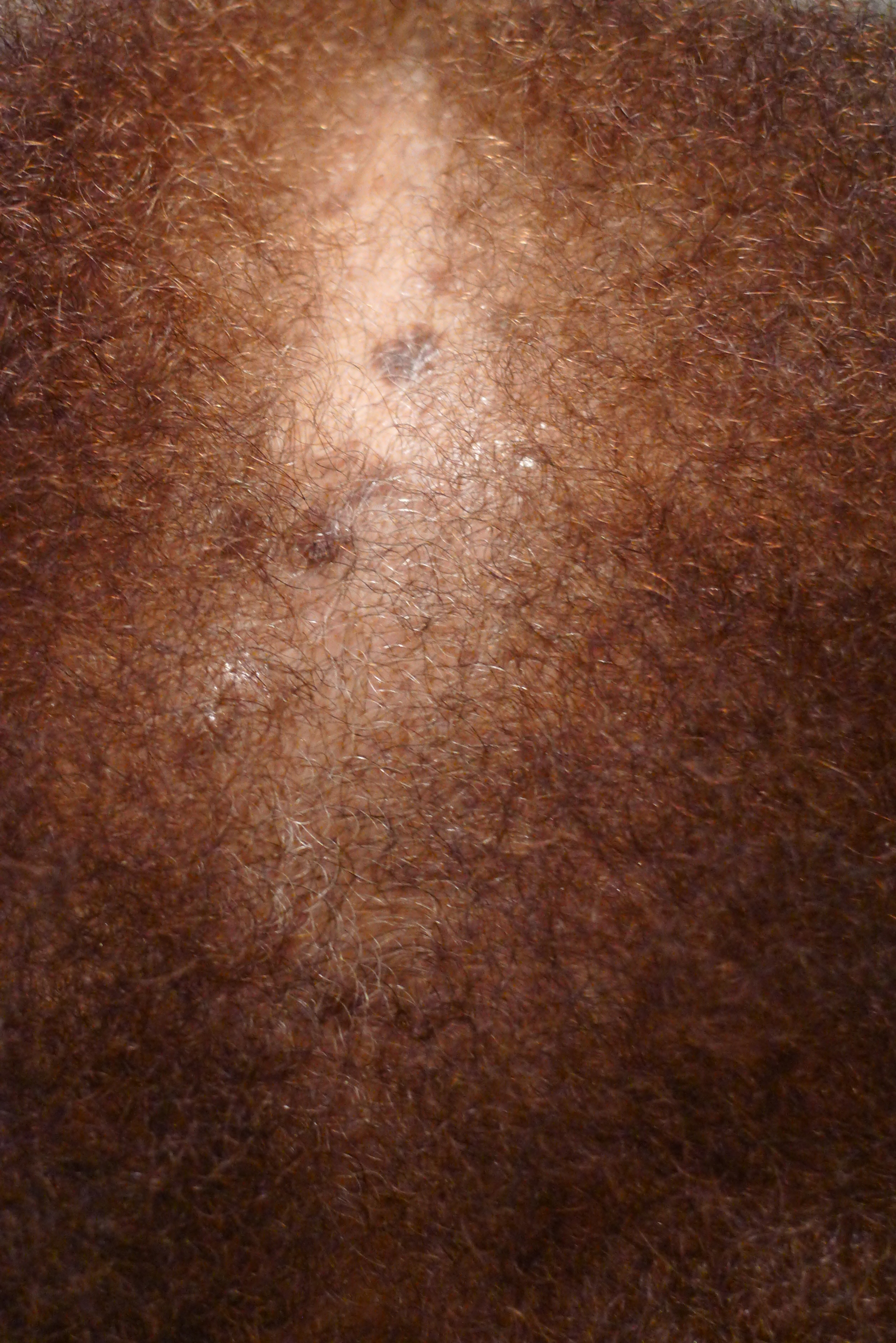Central Centrifugal Cicatricial Alopecia

What is CCCA?
Central Centrifugal Cicatricial Alopecia (CCCA) is part of a group of disorders known as cicatricial or scarring alopecias, which destroy hair follicles, replace them with scar tissue, and cause permanent hair loss. The exact cause of CCCA is unknown, but it is likely due to an inflammatory process triggered by genetic or environmental factors. Women with CCCA typically develop a thinning area at the center of the scalp that gradually enlarges and spreads outward, hence the term "central centrifugal." The inflammation responsible for destroying the hair follicle occurs beneath the skin's surface, so no visible scar usually appears on the scalp.
Symptoms & Causes

The cause of Central Centrifugal Cicatricial Alopecia (CCCA) is unknown, but genetic factors may play a significant role, with inflammation also contributing to the process. In CCCA, white blood cells surround the hair follicles and gradually destroy them, leading to hair loss.
CCCA primarily affects women of African descent but can rarely occur in women of other ethnic groups and men. It usually presents in individuals aged 25-65. There have been reports of CCCA occurring within families, and genetic studies are ongoing to identify potential contributing genes. However, most patients with CCCA do not have a family history of the condition, and it is not associated with other illnesses.
In many cases, the hair loss from CCCA is asymptomatic, but some individuals may experience itching, burning, tenderness, pain, or a tingling sensation. The affected area gradually enlarges and can cover a large portion of the central scalp, often leaving only a few solitary hairs. Additionally, hair breakage and traction alopecia (hair loss along the hairline) may be present in some women with CCCA. However, it is unclear if these conditions are related to the scarring process, as they are often caused by hair styling and grooming practices, and their relationship to the development of CCCA is still being studied.
Diagnosis & Treatments

Experienced dermatologists can often suspect a diagnosis of CCCA based on a detailed clinical history, a thorough physical examination of the scalp, and a scalp biopsy. A scalp biopsy is the gold standard for diagnosing scarring hair loss and is frequently performed when CCCA is considered. This in-office procedure involves using a local anesthetic to take a small skin sample for microscopic examination. The biopsy provides critical information, including the extent of inflammation, the number of hair follicles present, and the amount of scar tissue, all of which are essential for selecting appropriate therapy.
Early diagnosis and therapeutic intervention can often prevent permanent damage to hair follicles. Once a definitive diagnosis is made, an individualized treatment plan can be determined. Some hair regrowth is possible with early and effective treatment.
The goals of treatment are to relieve symptoms, halt the disease's progression, and prevent further hair loss. Regrowth is not possible once hair follicles are replaced by scar tissue, emphasizing the importance of early treatment before extensive hair loss occurs.
Treatments include anti-inflammatory medications to reduce inflammation around the hair follicle and prevent its permanent destruction. In mild cases, topical corticosteroids (in forms such as ointments, oils, solutions, lotions, foams, sprays, or shampoos) can help reduce inflammation and associated symptoms like itching, redness, or pain. Topical tacrolimus may also be used as a steroid-sparing agent. Additionally, corticosteroid injections, such as triamcinolone acetonide, can be administered every 4-6 weeks in inflamed and symptomatic areas. In more advanced cases, oral medications like tetracycline antibiotics (for their anti-inflammatory properties) or hydroxychloroquine (an antimalarial drug with anti-inflammatory effects) may be needed. Topical minoxidil, in solution or foam form, can help keep remaining follicles in their growing phase longer and stimulate hair growth. Hair transplantation is an option only in selected cases after inflammation is controlled and hair loss has stopped progressing.
Women with CCCA should handle their hair gently and can continue using their usual shampoo and conditioner if there is no breakage or traction alopecia. If hair breakage is present, the hair appears short and seems to have "stopped growing," making it important to avoid excessive heat and chemical processing. Perms and relaxers should be minimized, and intervals between treatments should be extended to 8 weeks or longer. Using a hairpiece or wig can help give hair a rest from heat and chemicals. In cases of traction alopecia, hairstyles that pull on the hair, like tight ponytails, should be avoided. Braids and cornrows should be loose and not pulled tightly at the scalp, and heavy hair extensions should be avoided.
